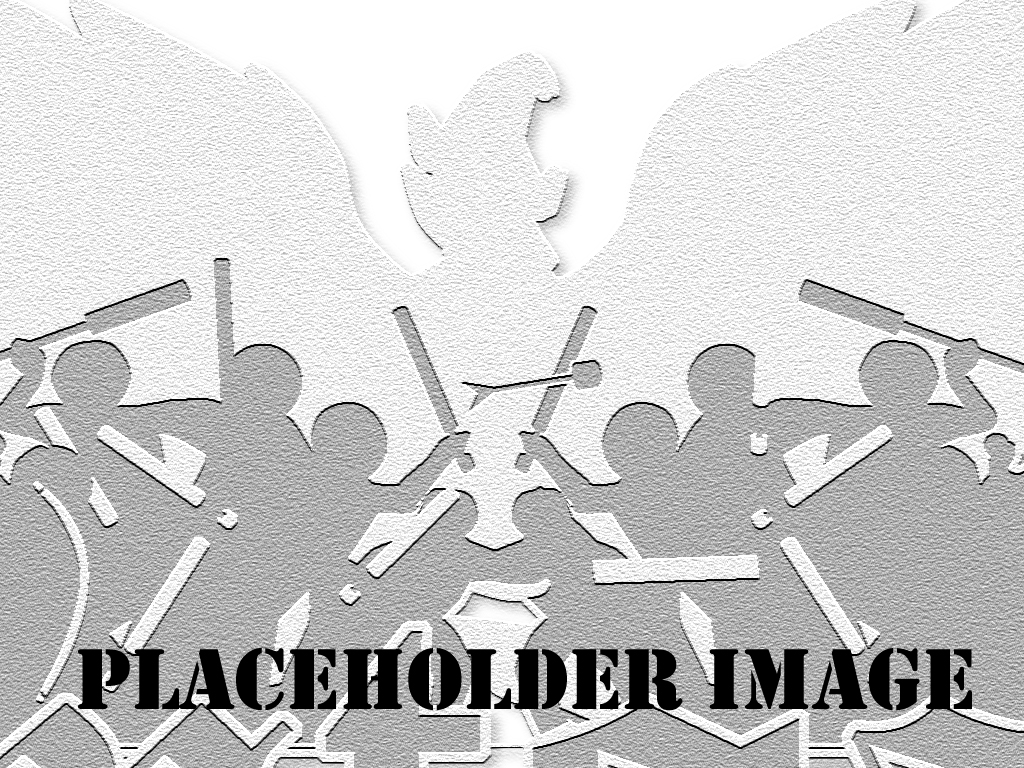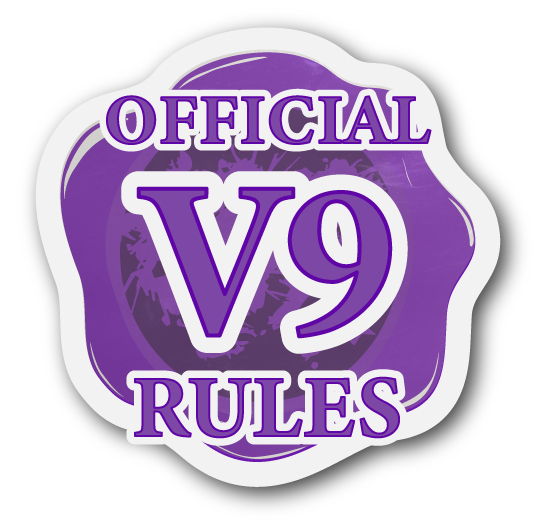V9: Abilities and Effects (General Rules)
- The Amtwiki is the official home and primary source for Amtgard V9 Rules as of February 25, 2023.
- These rules are currently in Open Alpha Playtest. See the Playtest Disclaimer for more details.
- To learn more about Amtgard V9 Development, please visit Amtgard.com.
- To view the current Amtgard V8 ruleset, please see the Amtgard V8 Rulebook.
Contents
General Rules
Abilities
Abilities allow players to interact with the game in a different way than just swinging a sword. Abilities can be used to heal wounds, bestow boons, destroy equipment, freeze players solid, and much, much more!
Players typically gain access to abilities through their class, although abilities can also be granted by magic items or as part of the rules for a combat activity.
- In the game of Amtgard, there is no functional difference between abilities that represent a physical feat and those that represent magic or spells. As such, following terms are interchangeable when referring to abilities:
- “ability” and “spell”
- “user” and “caster”
- “using”, “casting”, and “incanting”
- Abilities must be cast to be used.
- Specific abilities are detailed in the Master List of Abilities.
EXAMPLE ABILITY PROFILE
Below you will find an example of a simple ability profile. Some abilities may have additional rows for different effect types and/or features unique to that ability, such as material components, prerequisites, reminders, etc. Details for each term are explained later.
| ABILITY NAME | |
|---|---|
| Available to | |
| Type | |
| Range | |
| Incantation | |
| Status Effect | |
Casting (How to use Abilities)
All abilities follow the same basic rules for casting, whether they are evoking a physical feat or a magical spell. As such, the following terms are interchangeable when referring to how abilities are used:
- "user" and "caster"
- "using" and "casting"

In order to use or "cast" an ability, you must complete the following steps. If any part of this process is interrupted, performed incorrectly, or if an effect suddenly prevents you from casting, the casting attempt fails and no effects will occur. If you wish to attempt to cast the ability again, you must restart from the beginning.
- Speak Loud and Clear: All spoken components must be said loud and clear enough to be heard and understood within 50ft or by the target, whichever is closer. If the target is closer than 20ft, the casting must still be heard and understood clearly out to at least 20ft.
- Mispronunciation, improper wording, omitting words, insufficient volume, or a gap of more than two seconds between words will interrupt casting.
- Remember that battlefields can be chaotic and each player will process sensations differently. Casters and their targets should act in good faith when determining what is loud or clear enough. When in doubt, refer to the Battlefield Etiquette.
- Don’t Move Your Feet: You must not move your feed while casting. Casting is immediately interrupted if you move your feet in any significant way. Minor movements, such as adjusting your balance, will not interrupt casting. Some effects can allow abilities to be cast while moving.
- Have a Free Hand: You must have a Free Hand for the duration of your cast. Casting is immediately interrupted if you no longer have a Free Hand. Abilities marked with ⬗ do not require a free hand.
- Identify the Target: When casting a verbal or enchantment ability on another player, you must clearly point and state their name or a unique descriptor that precisely identifies them.
- Ideal descriptors include class-name, clothing, and/or carried items.
- Insensitive or derogatory nicknames/descriptors are not acceptable.
- Pointing can be done with weapons or items in hand. It does not need to be your Free Hand.
- Pointing is only required while you are identifying the target. The pointing does not need to be maintained throughout the cast.
- You are responsible for making your best effort to convey your intended target fairly and in good faith via a combination of both spoken word and pointing/gesturing.
- Strike-based abilities such as Spellballs, do not require a target since the target is defined by striking them.
- Say the Ability-Specific Incantation: Speak the unique, ability-specific lines listed in the Incantation section of the ability description.
- End with the target in Range and Line of Sight: The target must be in Range and Line of Sight at the moment the incantation is complete. If so, the ability will impart its effects on to the target. If not, the ability fails and has no effect.
- The Ability is Expended: One use of the ability is expended as soon as the incantation is finished, even if the target is immune, resistant, out of range, out of line-of-sight, or otherwise unaffected by the ability.
- Make any Necessary Choices: If the effect requires a choice, that choice must be made and declared as soon as casting is completed.
- To save time, either the caster or the target can make the choice for non-offensive abilities, although the caster has final say in the event of a disagreement.
Chants
A Chant is an audible component required to maintain effects listed as 'Chant Effects'.
- A chant effect begins as soon as the ability is cast, and continues to impart its effects as long as the caster remains chanting.
- A player can only maintain one Chant at a time.
- Players may chant while moving. The words of a chant must be repeated continuously with no more than five (5) seconds between each repetition. Chants must be able to be heard and understood up to 50ft away.
- The chant portion of an ability is a declaration, not an incantation. If a player becomes unable to cast or speak, they are still able to maintain chants that were in effect beforehand unless the effect also prevents chanting specifically, such as Frozen.
- Chants end automatically if the caster begins casting an ability or stops maintaining the chant. Some chant effects may have additional conditions that will also force the end of the chant, or exceptions that allow the chanter to use certain abilities without ending their chant.
Effect
Effects are caused by strikes, abilities, and other gameplay mechanics.
- A player can be affected by multiple effects simultaneously.
- A source can impart more than one effect at a time.
- When a source imparts multiple effects at the same time, they are all applied simultaneously.
Effect Categories
All effects are divided into categories based on similar properties.
- Immediate Effects are completely resolved in the moment they occur with no additional actions or timers required.
- Examples include: damage, armor breaking, healing wounds, repairing equipment, etc.
- Immediate effects are always independent from one another, even though they are typically listed under a single header. They must be resisted or protected against individually.
- Status Effects last until an amount of time has elapsed, the player dies, or some other requirement is met.
- Players must declare the name or a brief summary of the effect if asked.
- If a status effect expires due to a timed duration ending, the player it affected must declare, "No longer [Effect or State that Ended]". This must be audible out to 20 feet.
- All the text under a status effect header is part of the same status effect. If one part of the status effect is removed, resisted, or otherwise ignored, the entire status effect is removed or ignored. A status effect cannot be broken into pieces of itself.
- Chant Effects last as long as the caster remains chanting. See ‘Chants’ for more info.
- All the text under a chant effect header is part of the same chant effect. If one part of the chant effect is removed, resisted, or otherwise ignored, the entire chant effect is removed or ignored. A chant effect cannot be broken into pieces of itself.
- Enchantment Effects last until it is willingly discarded or the player dies. See ‘ Enchantments’ for more info.
- All the text under an enchantment effect header is part of the same enchantment effect. If one part of the enchantment effect is removed, resisted, or otherwise ignored, the entire enchantment effect is removed or ignored. An enchantment effect cannot be broken into pieces of itself.
- Trait Effects are active for the entire game and cannot be removed, disabled, or discarded. See ‘ Traits’ for more info.
- Secondary Effects are follow-up effects that are applied sometime after an initial effect, usually once some sort of condition or requirement is met.
- A player cannot willingly choose to be immune to, resist, or refuse secondary effects once the primary effects have been applied to them. Other effects that would prevent a player from being affected by something, such as Tracking or being Frozen, can still prevent secondary effects.
- Since secondary effects are still effects, they will also include a primary effect category listed in brackets, such as "Secondary Effect (Immediate)".

